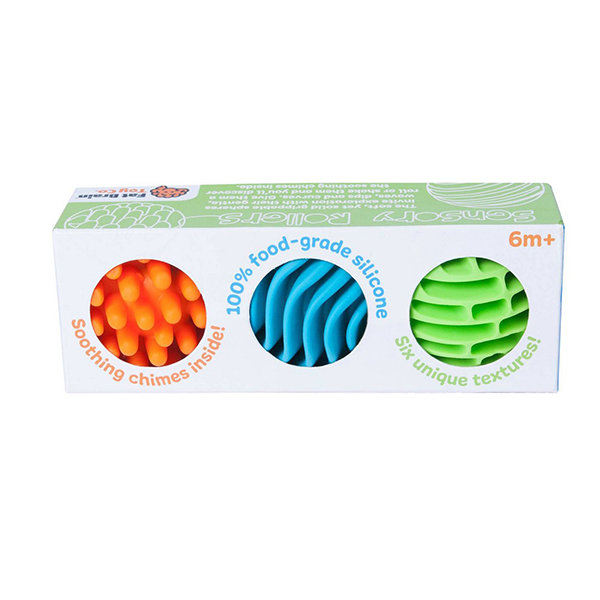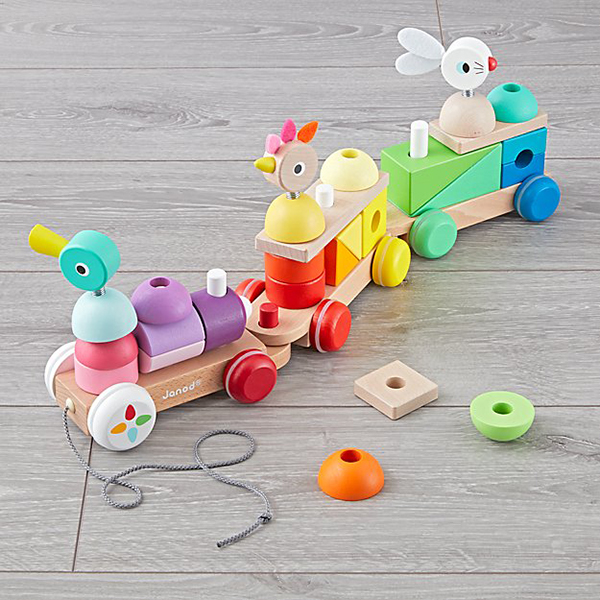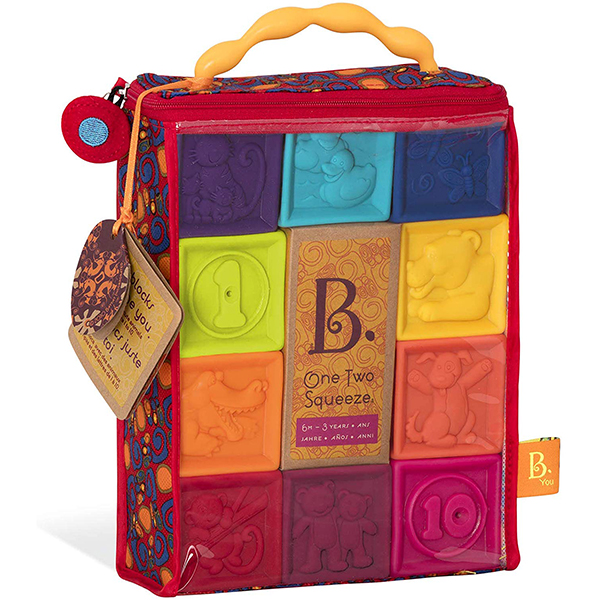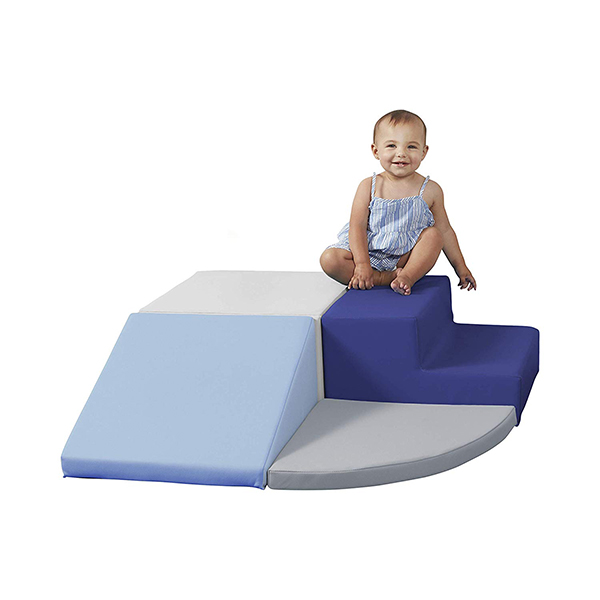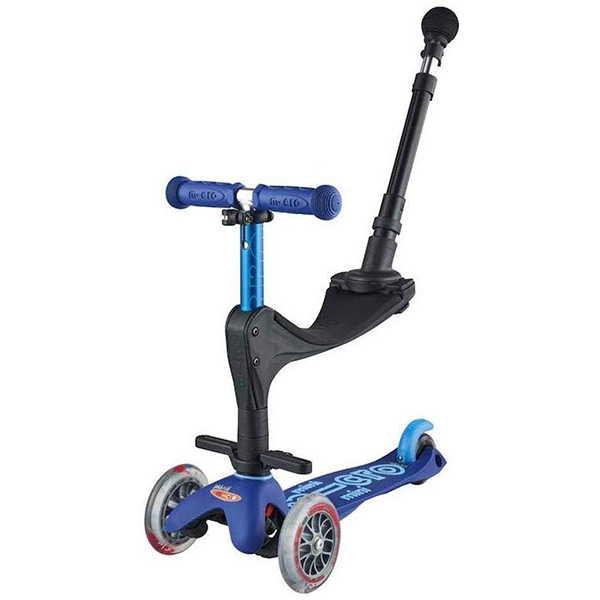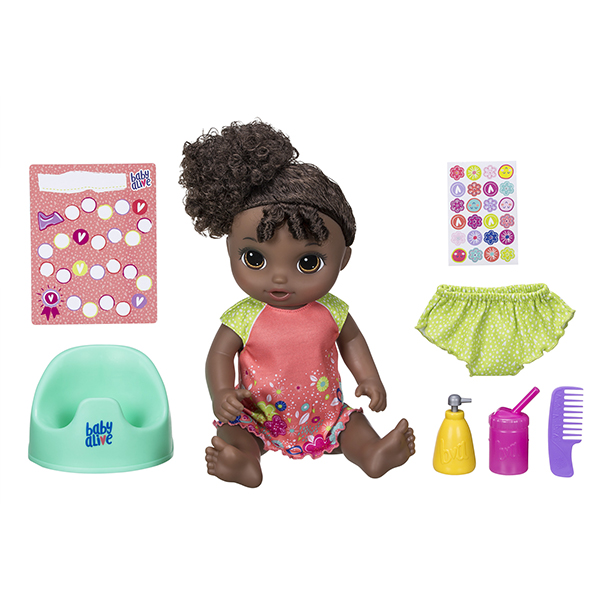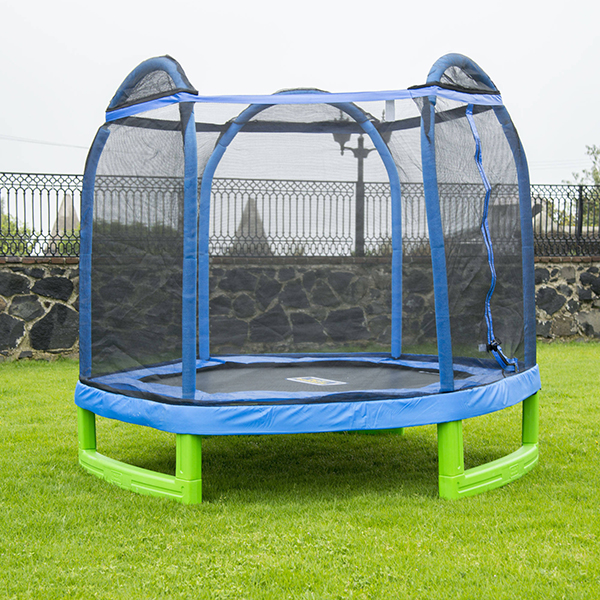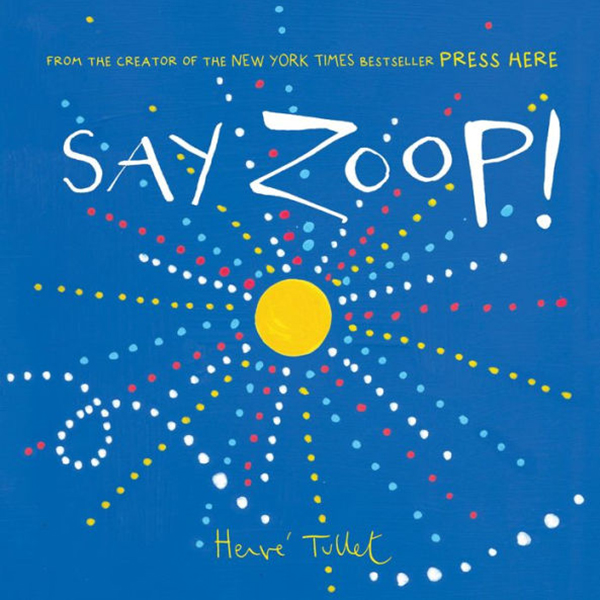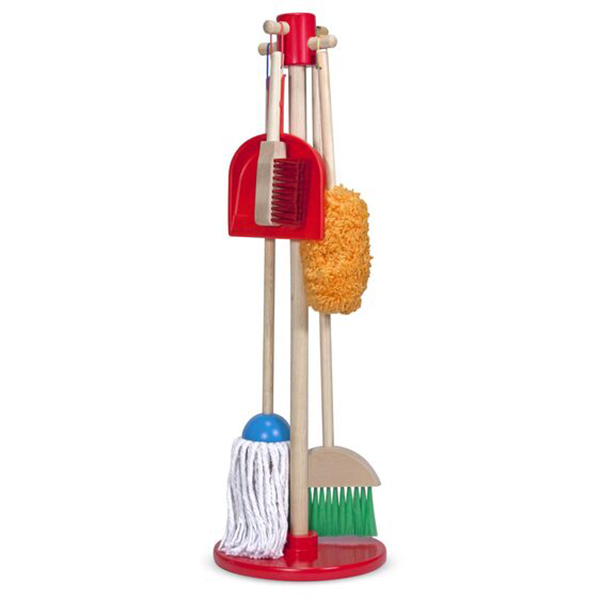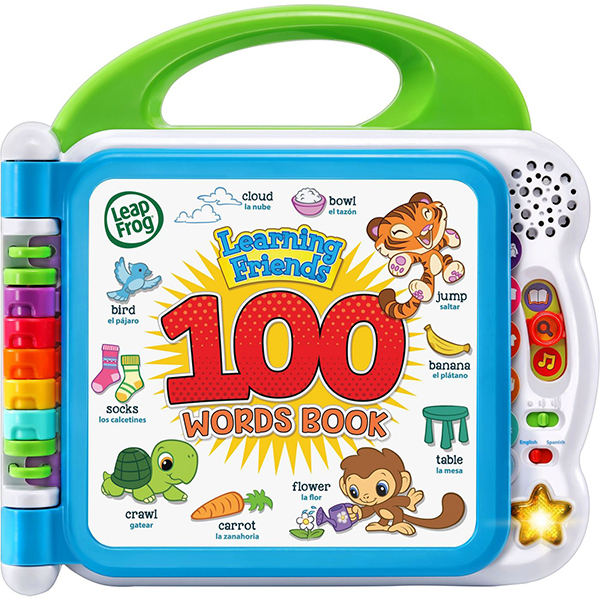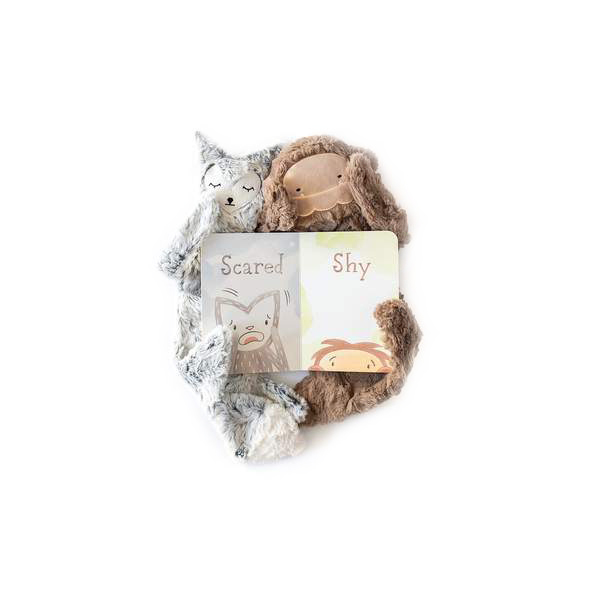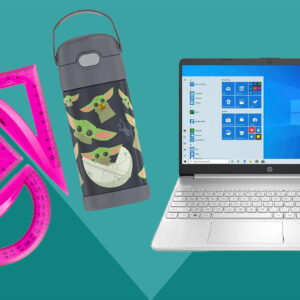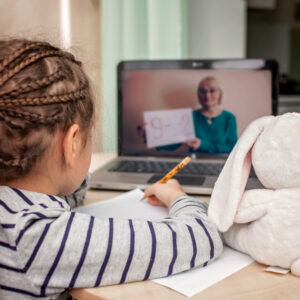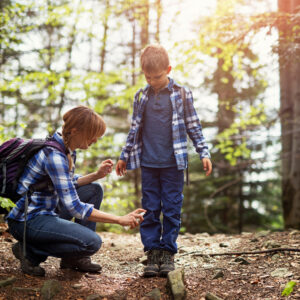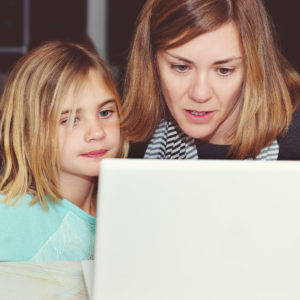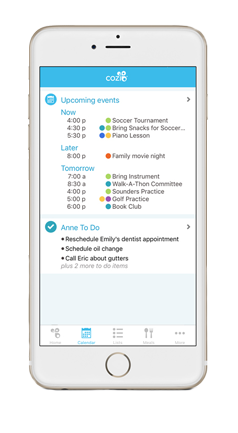
Your toddler will make huge strides physically, intellectually and emotionally, whether it’s learning to use the potty or how to make friends. Here’s a look at the developmental milestones to come.
Toddlers’ Physical Developmental Milestones
Throwing and Kicking a Ball (12 months)
Soon after her first birthday, your child will show interest in ball play—first by throwing, then by kicking at age 2 (catching comes around age 3 to 4). To help her along:
- For throwing, start by rolling a small softball back and forth between you, moving farther and farther apart with each pass. Soon, she’ll want to throw it.
- For kicking, show her how to use her feet instead of hands to roll a ball back and forth between the two of you.
- For catching, have her roll it up a small incline to catch on the way down.
Pushing and Pulling (12 to 18 months)
Once your child’s a confident walker, he’ll discover the joy of dragging or pushing toys along. And all the while he’ll improve his coordination, since he’ll be walking forward while occasionally looking back. So offer him some pull or push toys to play with, or make your own by attaching a string to a toy car (make sure to supervise or limit the length of the cord to 12 inches to avoid a strangulation hazard).
Squatting (12 to 18 months)
Up to now, your baby has had to bend down to pick things up off the ground. But soon, she’ll attempt to squat instead. To help her along:
- When she starts to stoop over for an object, show her how to bend her knees to squat.
- Let her practice. Line up a few small toys on the floor and have a “treasure hunt,” where she has to go from one item to the next and pick them up—a perfect activity for cleanup time!
Climbing (12 to 24 months)
Toddlers climb up on the kitchen table (or your desk or the bed) for the obvious reason: Because it’s there. Kids this age are trying to find a balance between risk and challenge. Of course, you know that the challenge of climbing up the bookcase isn’t worth the risk, but the average toddler’s ability to reason isn’t in line with his physical prowess. Climbing is an important physical milestone, though. It’ll help your child develop the coordination he needs to master skills like walking up steps. Ways you can help:
- Provide safe opportunities for climbing. Toss sofa cushions or pillows on a carpeted floor, or let him loose at a toddler-friendly playground.
- Anchor bookcases and other pieces of furniture to the wall, even if you think they’re too heavy to topple. Clear shelves of things that could fall on him—or that could tempt him to climb.
- Limit access. Keep chair seats pushed under the table, and take a closer look at the stove: Could your child get to it by climbing up shelves or cabinets?
- Set up gates at the top and bottom of the stairs. It’s the only way to keep your child from attempting that irresistible—but dangerous—ascent. To help your child learn to climb the stairs safely, practice together by taking him up and down while holding his hand.
Running (18 to 24 months)
Some kids seem to go from crawling to sprinting in two seconds flat. Others take more time. How come? Because kids fall a lot when learning to run, and some are just more willing to risk it. To encourage your child:
- Play tag where falling won’t hurt too much, such as on a grassy lawn or a sandy beach.
- Chase your child—this is one time you can actually encourage him to run away from you!—and then switch and have him run after you.
- Try racing, especially if older kids are willing to play along.
Potty Training (24 to 36 months)
Potty training is one of the milestones parents look forward to the most—no more diapers! But keep in mind that the age when kids are ready for it varies widely. Signs that it may be time:
- Your child peers down at her diapers, grabs them, or tries to pull them off when they’re soiled; or she squats or crosses her legs when she needs to go. These actions show that she’s mature enough to understand how her body works.
- She shows an interest in things that are potty-related—wanting to watch you go to the bathroom or talking about pee-pee or poo-poo.
If these apply to your child, and she can get on and off the toilet and pull her pants down, then give toilet training a shot. Help her associate the about-to-go sensation with using the potty. As soon as you notice the usual signs, give a quick prompt like “Let’s use the potty” as you guide her toward it. For more tips and strategies, check out our Potty Training guide.
Jumping (24 to 36 months)
Between 2 and 3 years, toddlers learn how to jump off low structures, and eventually how to jump from a standing position. Both of these skills require bilateral coordination, or the ability to use both sides of your body to do something different. How you can help:
- Go curb hopping. Holding your child’s hand, stand next to her on a curb or a low step and say, “One, two, three, jump!” then jump down simultaneously.
- Practice leapfrogging. A prelude to jumping from a standing position, which is more difficult than hopping off a step. Show your child how to get down into a half-squat position and throw her arms up while she hops. Gradually she’ll figure out how to jump from a standstill.
Psychological and Emotional Milestones
Prereading (12 to 36 months)
Most toddlers love storytime. It’s a chance to snuggle with Mom or Dad, gaze at colorful pictures, and hear interesting sounds. But it’s more than just a cozy activity—your child is also learning the earliest of reading skills, including:
- How books work—we open them, the story is inside.
- We read from left to right.
- Books can tell a story.
- Stories have a beginning and an end.
To encourage your child’s love of reading, try to:
- Read aloud.
- Let your baby play with his books so he gets familiar with them.
- Keep it brief. Little people have little attention spans, and ten minutes—even five minutes—is a long time.
- Ask questions. Have him find simple things, like the baby’s eyes or the pretty flower. Your goal is to bring what’s happening on the page into an interaction between the two of you.
- Follow your child’s lead. If your tot grabs the book from you to explore it on his own, let him—just hold him on your lap and cuddle with him as he looks.
Gaining Independence (18 to 36 months)
Most babies don’t see themselves as entities separate from their parents, especially their mothers. This changes quickly sometime in the second year, when they become aware that they’re individuals, and are more insistent on doing things on their own. Here’s how to give your child room to grow:
- Allow more time in your schedule for her to do things herself. If she wants to put on her own coat, shoes, etc., getting out of the house will take that much longer.
- Include her in your chores. Let her hold the dustpan, or send her around with a rag to dust furniture legs.
- Be patient. At first, letting your child use a fork or pull on his pants will drive you crazy. But let her try and don’t step in.
- Your toddler’s growing independence comes with a stage that can, at times, be exasperating: She’ll assert her independence by saying “no” all the time. Your impulse may be to show your child who’s boss, but you’ll have better luck if you:
- Say yes to your little naysayer whenever you can—in other words, when it isn’t unsafe, inconvenient, or unreasonable.
- Be firm when necessary. When you have to get your way, do it as quickly, deliberately, and calmly as you can. Once you’ve physically put your toddler in her car seat, you can explain your reasoning in simple terms—you can tell her that it’s dangerous to ride in a car without one.
Using Simple Sentences (18 to 24 months)
Ever since your child said his first coo, he’s been working toward this moment: By combining gestures, isolated sounds, and words, he can now speak in simple two-word sentences. You’re thrilled, and he’s thrilled: Now you can have a conversation (of sorts)! Be patient, though—even though he knows certain words, he may not fully understand their meaning for a while. To encourage his talking:
- Don’t finish your toddler’s sentences for him; doing so will only add to his frustration.
- Remember that he’ll still resort to crying when he’s too tired, hungry, cranky, or overwhelmed to use words.
- Give your child lots of opportunities to speak, especially if there are older kids in the house, too.
- As your toddler becomes more verbal, make sure you model good speech rather than correct his pronunciation or his grammar. Children who are interrupted and corrected can feel like giving up.
Learning Empathy (24 months)
At this age, toddlers may begin to make the first connections between their own feelings and behavior and those of other people. This is the foundation for interacting with others and building friendships. To help your child’s developing empathy:
- Don’t try to fix it when he feels bad. Help your child learn to cope by identifying his emotions for him—whether he’s sad because his favorite toy broke or someone else is crying—and reassure him that it’s okay to feel the way he does.
- Watch your own emotions. Don’t be shy about telling your child when you’re angry, sad, or disappointed—but make sure that you’re not overreacting to the situation, which can make your child feel anxious or scared.
What to Do if Your Toddler Regresses
It can be disconcerting when a toddler appears to be regressing in some way. For instance, your chatterbox may suddenly do nothing but point and cry; your avid walker may reach up and demand to be carried. All of this is normal. Toddlers are developing so many skills they can become overwhelmed. What to do when your tot regresses:
- Acknowledge her feelings. If she can’t tell you what’s bugging her, see if she can show you.
- Rather than seeing it as good or bad, see it as a signal. When a child regresses, she’s usually telling you that she needs comfort. Let her snuggle up with you, or read her a book. She’ll likely behave like her normal self soon.
You might worry if your child is delayed in reaching a milestone. But some kids are simply late bloomers; some just master certain skills before others. However, if you’re concerned, speak to your doctor. For more information, go to our Motor Skill Delays guides.
Summary
A toddler is constantly learning how to do new things. Give yours loving support, and as often as possible provide a little freedom for him to strive for independence. And don’t worry if he occasionally “unlearns” a skill—a little regression is just part of the process in the toddler years.
Each product we feature has been independently selected and reviewed by our editorial team. If you make a purchase using the links included, we may earn commission.
